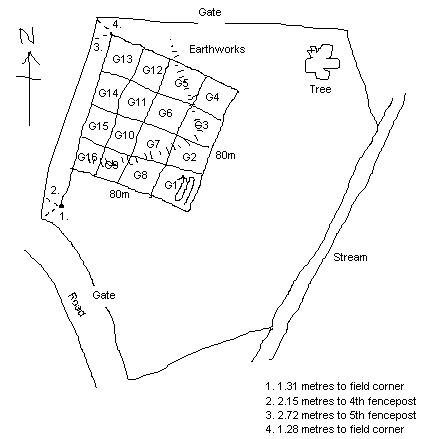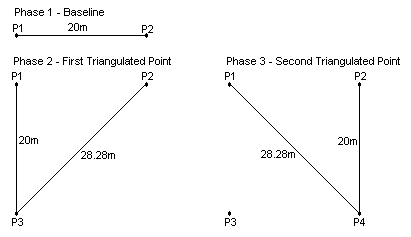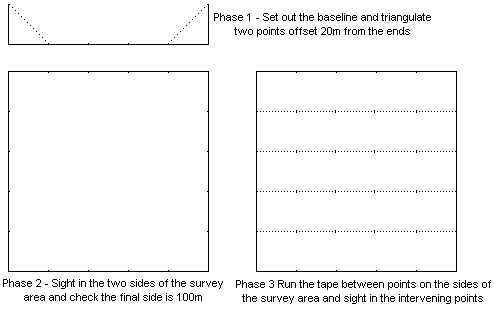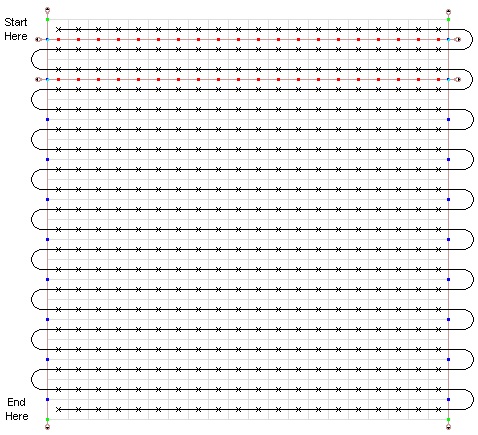When taking a reading using a piece of geophysics equipment, you are getting a response from a single point on the landscape. Whilst this is meaningful, in itself it is a useless piece of information. Geophysics surveys work by comparing readings from one area with another, so patterns can be recognised. The best way to do this is to take readings at regular intervals, which can then be displayed on a computer. Whilst it is possible to measure out where every single reading should go for a survey, this would be horribly time consuming, so the best way is to have a set of large squares which are subdivided by a series of marked strings when the survey takes place. The size of the squares that make up the survey area is important. Too small and you spend too long setting up the squares, too big and performing the survey itself becomes a problem. Resistivity meters have a cable, so if the squares are too big then the cable gets stretched. Magnetometers do not suffer from this restriction, so larger grid squares can be used. For resistivity, most people tend to use 20mx20m grids, though for magnetometry, 30mx30m and even 40mx40m grids are not uncommon. The choice is up to you and most hardware and software will cope with a variety of grid sizes.
It is important that when you set up a grid for a survey, that you can set out the same grid again. This is so you you know exactly where on your site the new features are and can tell people where they should be excavating. The best way to do this is to set up a baseline. If you can find two points that can be found again be referencing them to fixed points in the landscape, you can draw a line between them and offset your grids from this line. The fixed points can be anything that is fixed in the landscape and is unlikely to be moved. You need two of these features for each point. If you measure from the point on the end of your baseline to each of the fixed points, you will be able to triangulate back from the two fixed points back to the baseline point using the measurements you have recorded. Whilst it is desirable to have the length of the baseline equal to the length of the survey area, it is not always possible, so you must record how far along the baseline the survey area begins. The baseline itself can be positioned anywhere you wish, but there are certain constraints, such as availability of fixed points to reference from. Generally, you should set up your baseline in such a way that the grid squares will not conflict with the boundaries of the site and cause disruption to the survey.
Once you have set up your baseline, the grid squares themselves can be offset from it. There are several methods, described below. Whatever method you use, a quick sketch of the baseline, grids, local features and any relevant measurements should be made for your records, so the grids can be reconstructed as necessary. Notes relevant to the processing of data should also be made, such as the direction of survey within a grid and the order in which the grid squares are surveyed.

An Example Sketch For Geophysics Records



